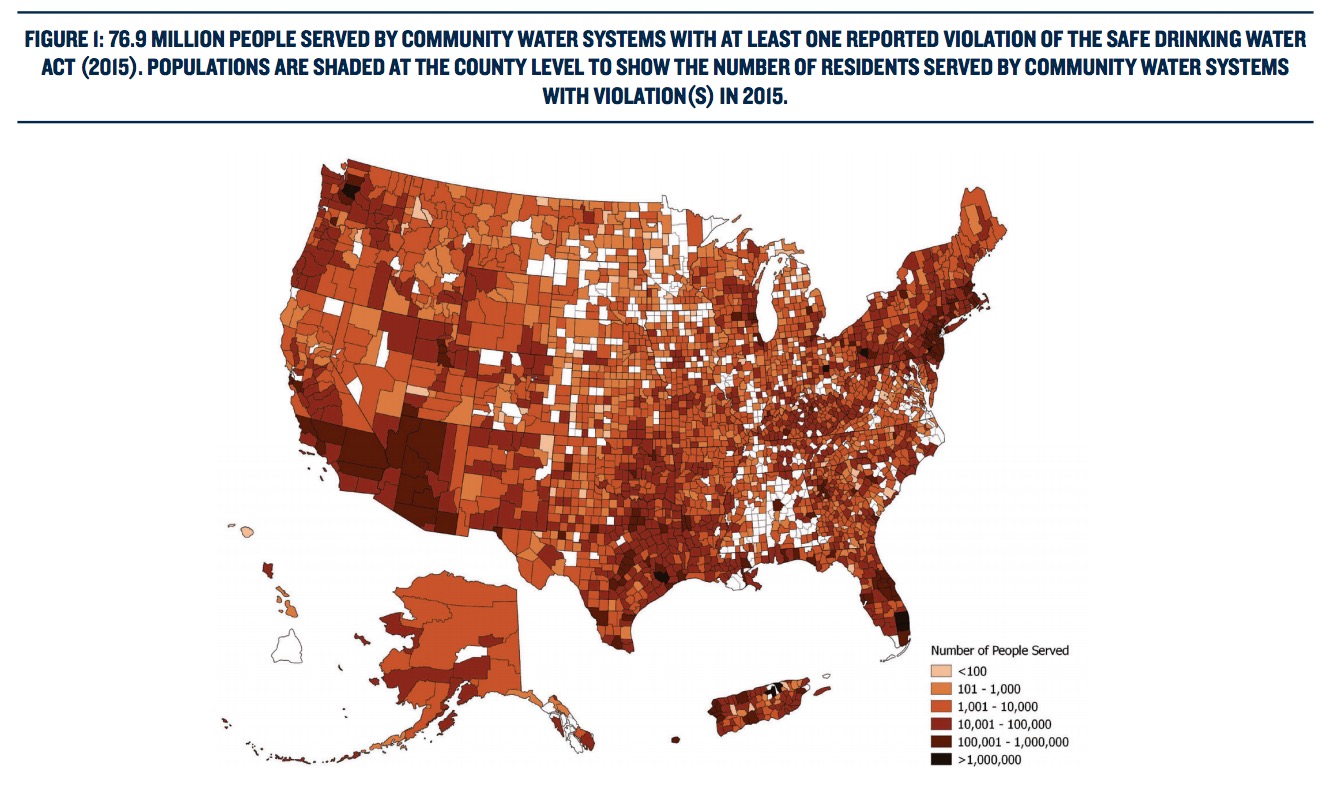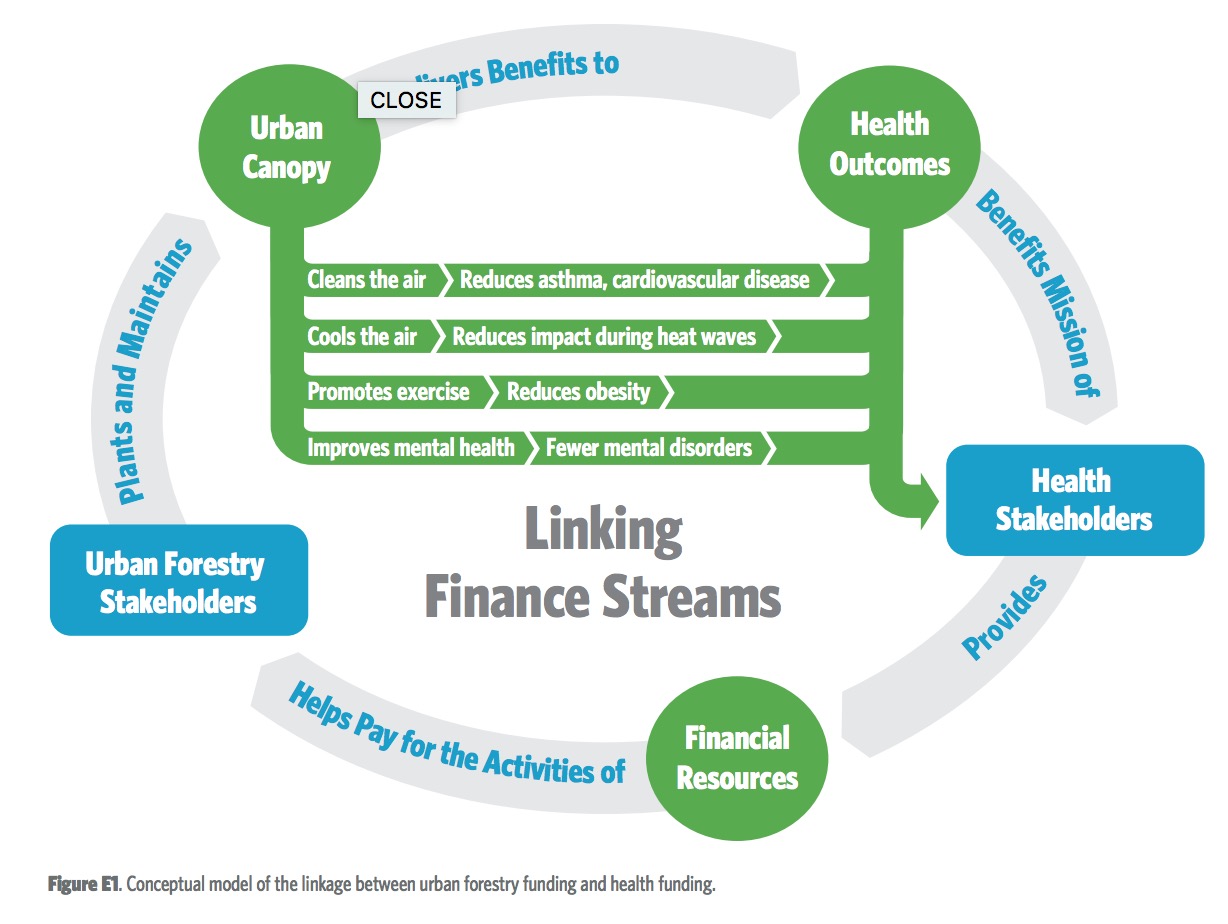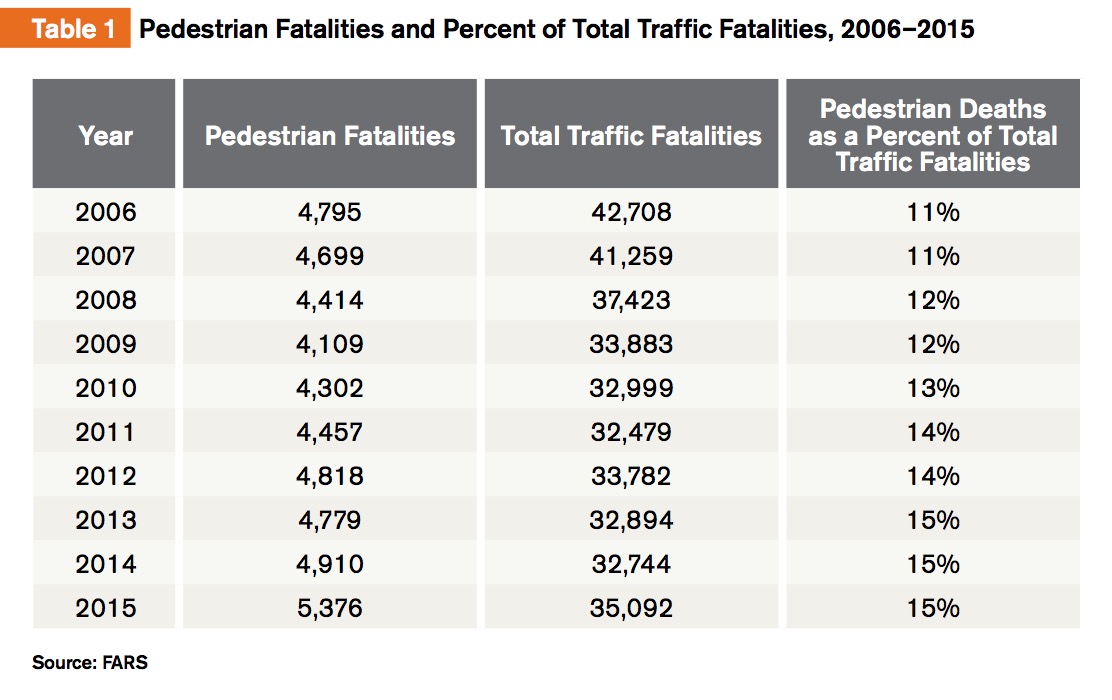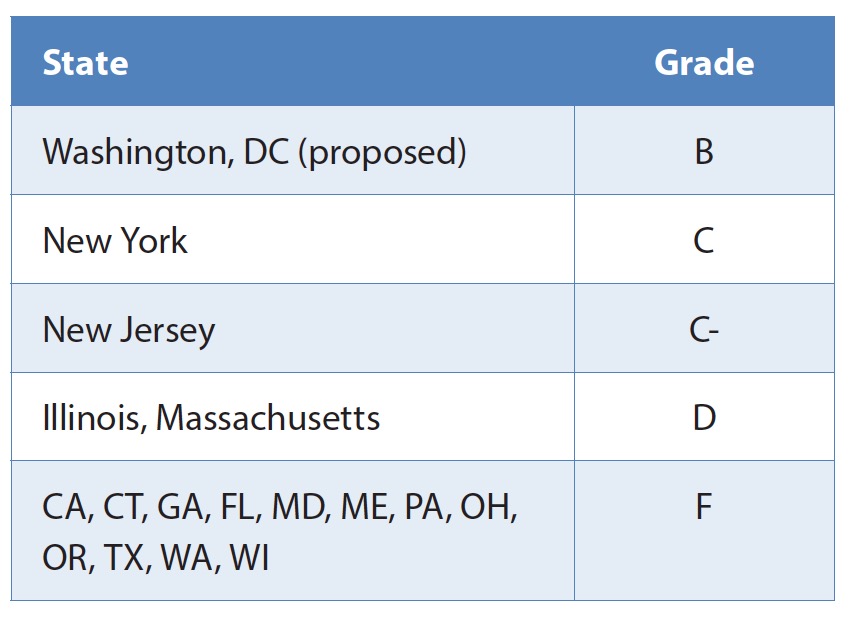
This report expands our analysis beyond lead to examine all drinking water contaminants regulated under the SDWA. Much as Flint is not the only water system with lead problems, we have found that Lead and Copper Rule problems are far from the only widespread violations of drinking water rules. Our research shows that in 2015 alone, nearly 77 million people were served by more than 18,000 community water systems that violated at least one SDWA rule, and there were more than 80,000 violations of SDWA rules that year. These violations included exceeding health-based standards, failing to properly test water for contaminants, and failing to report contamination to state authorities or the public.
View this complete post...
Tags: Clean Water, EPA, Flint, Natural Resources Defense Council, NRDC, Public Health, Safe Drinking Water Act, safety, SDWA, Water, Water Systems
Posted in
Drinking Water, Infra Views, National, Policy, Wastewater, Water Treatment
Comments Off on Threats on Tap: Widespread Violations Highlight Need for Investment in Water Infrastructure and Protections























 RSS Feed
RSS Feed